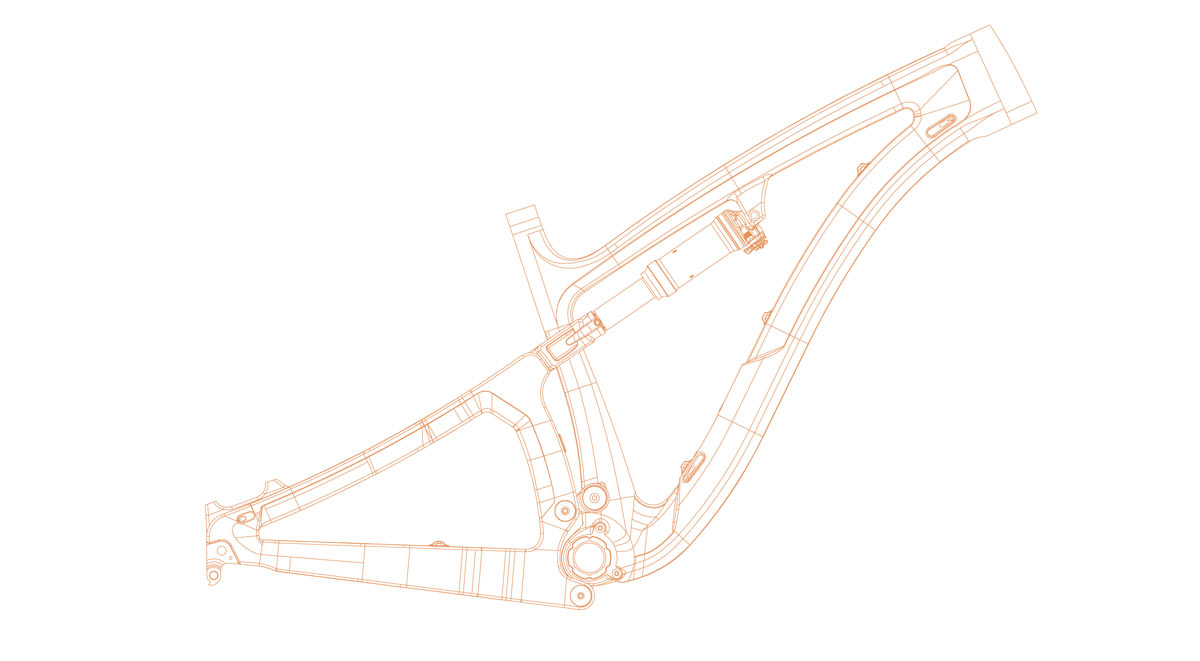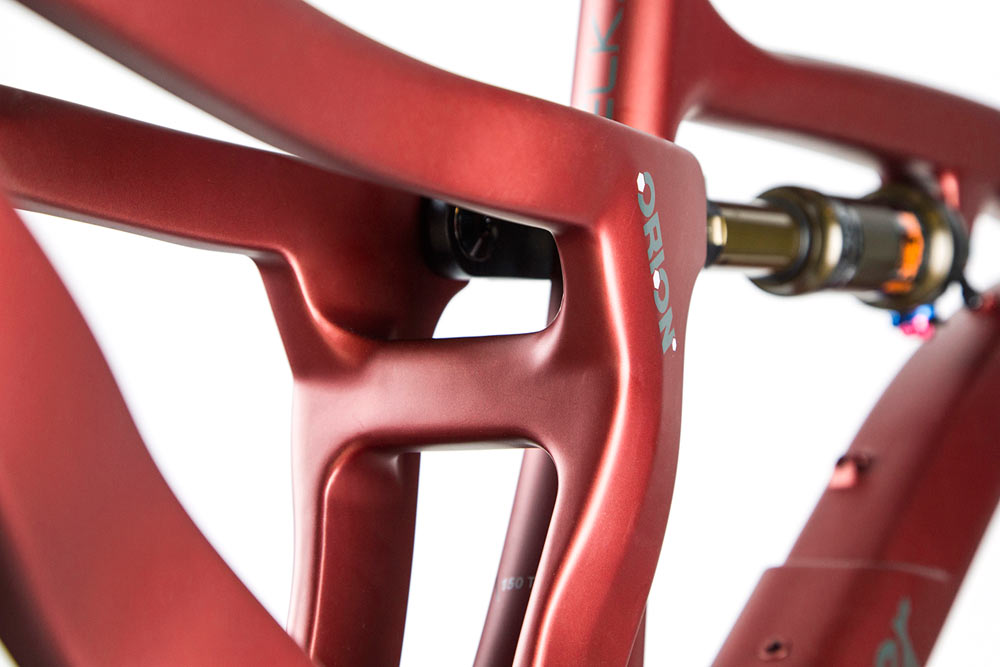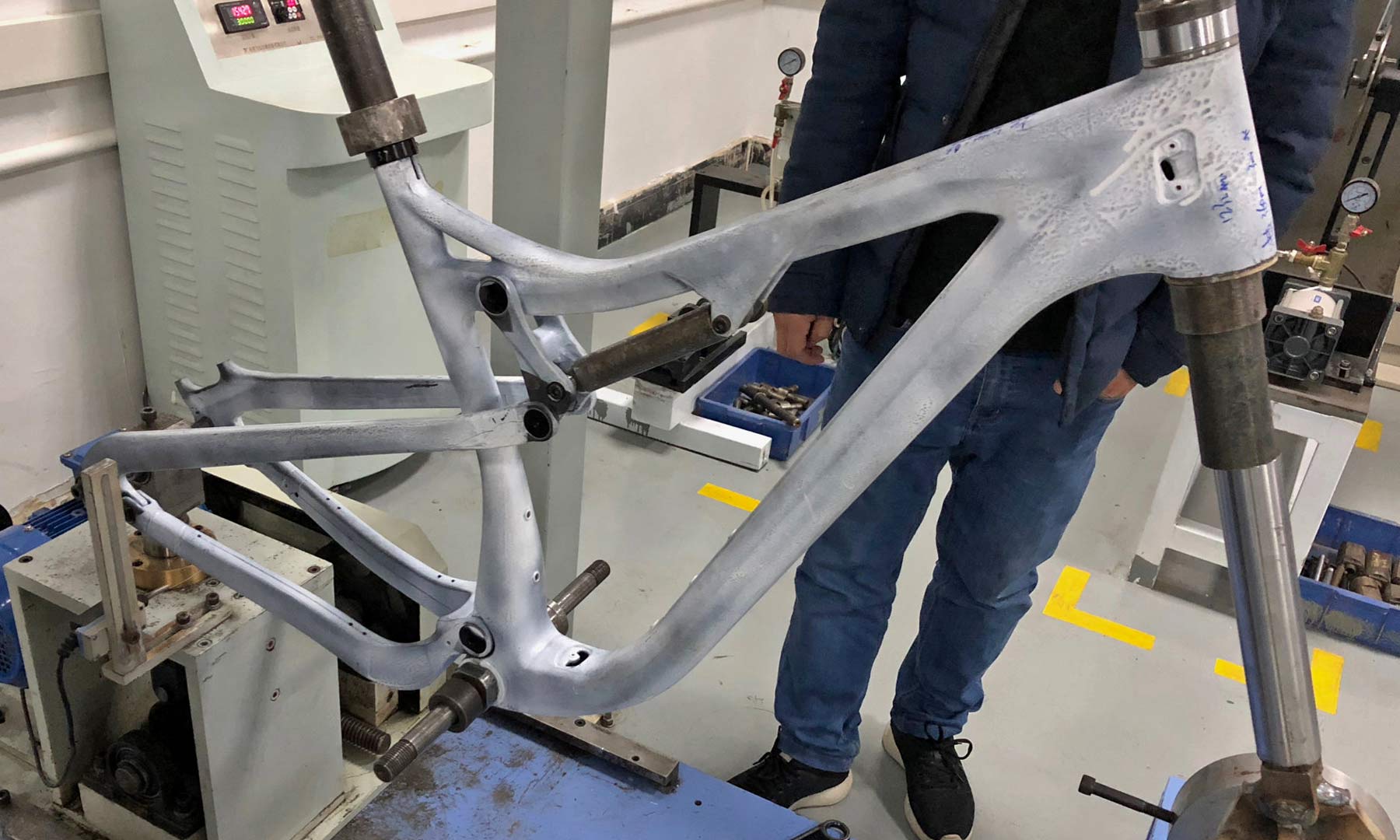One of the most common terms bandied about to describe a full suspension bike’s pedaling performance is “Anti-Squat”. Which means, for many riders, it’s a marketing term with no clear meaning, but obviously it must be good because everyone’s touting it. Right?
Mostly, yes. But like chocolate cake, too much of a good thing can be bad. To cut through the hype and explain what you need to know, we spoke with three engineers and designers from Niner Bikes (George Parry, Engineering Manager), Esker Cycles (Tim Krueger, Managing Partner) and Fezzari (Tyler Cloward, Director of Product Development). Here’s what they have to say, followed by our own take on why it matters and what you should look for…
BIKERUMOR: In simple terms, what is “Anti-Squat”?
KRUEGER: Anti squat is a trait of a suspension design that resists the compression of the suspension caused by mass transfer during acceleration.
CLOWARD: Anti-Squat is the force on a suspension system that is generated by the drivetrain. As you accelerate and the bike moves forward, the rider’s weight moves rearward causing the suspension to compress or squat. The biomechanics of pedaling (downward force of legs) also produce a downward force causing the suspension to compress or squat. As the chain is pulled forward by the pedaling motion, it creates a force on the suspension system opposite of the “squat” caused by the rider and weight transfer, and that’s why it’s called Anti-Squat.
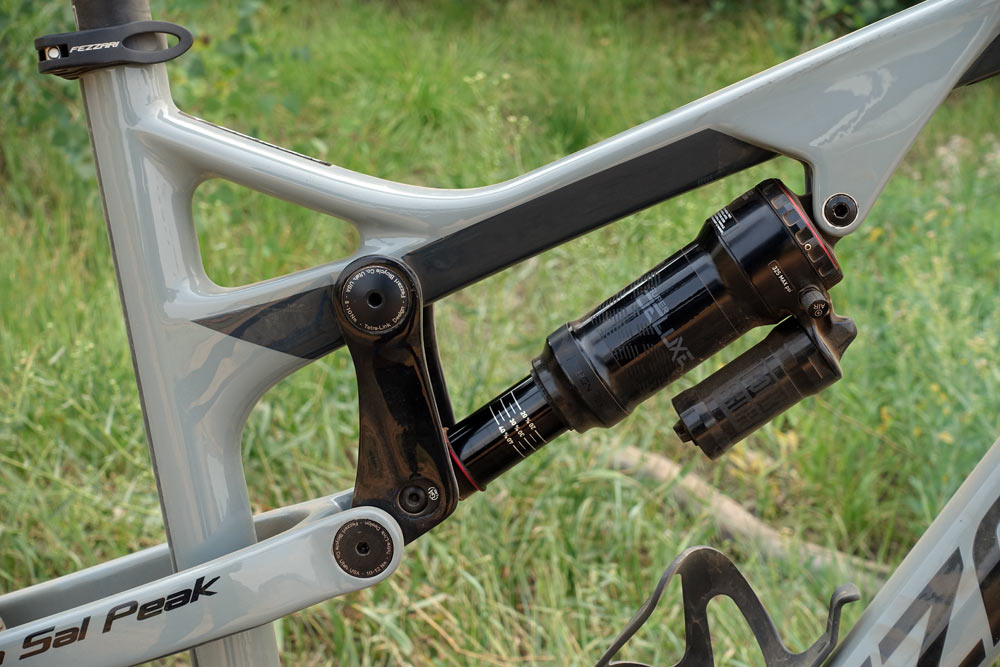
BIKERUMOR: If you had to explain it more technically, is there anything you need to add to that description to help people understand the concept better? (as in, if a bike has “50%” anti-squat, what does that number mean?)
PARRY: Bicycle suspension designs typically use the chain tension resulting from pedaling loads to reduce the amount of force on the shock. Thus, reducing or eliminating the amount of suspension squat when force is applied to the pedals. This is directly related to chain tension. So, higher pedaling force, or chain tension, results in more anti squat.
CLOWARD: If a bike has 50% anti squat that means that the opposite force from the drivetrain is 50% of the squat force caused by the rider weight shift during acceleration. A bike with 50% anti-squat will have a fair amount of pedal-bob because there is only half of the opposite force on the suspension from the drivetrain compared to the downward force caused by the rider weight shift from acceleration. 100% anti-squat means that the force of the drivetrain on the suspension is equal to the opposite force caused by the weight shift. 150% means there is more force caused by the chain in the opposite direction of the squat caused by the weight transfer from acceleration. In this case, when pedaling, the bike will literally rise.
KRUEGER: The best thing to understand is the point of 100% anti-squat. That is what everyone is trying to achieve at the right point in time. 100% anti-squat is when mathematically, there is nothing causing the suspension to extend or compress under acceleration – it is literally the point of perfect neutrality amongst all the variables that can cause suspension movement from things other than bumps in the ground under acceleration. In the case of your question – 50% anti-squat is when there is a re-active force pushing back against the mass transfer under acceleration that is 50% of the force created by the mass transfer.
BIKERUMOR: What’s the benefit to the rider?
PARRY: When force is applied to the pedals there is a shift in the rider’s center of gravity. This can cause the suspension to compress and results in lost energy and pedal induce bob (suspension compressing and extending throughout the pedaling cycle). Anti-squat can eliminate this pedal induced sag, resulting in more energy being translated to forward movement and, ideally eliminating pedal induced bob.
KRUEGER: Squat would be the trait of a suspension bike to compress or “squat” under acceleration. Acceleration in a bike is not even because we have a very low rpm, high-torque motor with a lot of unbalanced mass (legs). This unbalance of the motor, along with the suspension compressing under acceleration would be referred to as “bob”, or the suspension constantly compressing and extending with the rythym of the pedaling cadence.
CLOWARD: (Basically, it’s) the pedaling platform of a bike.
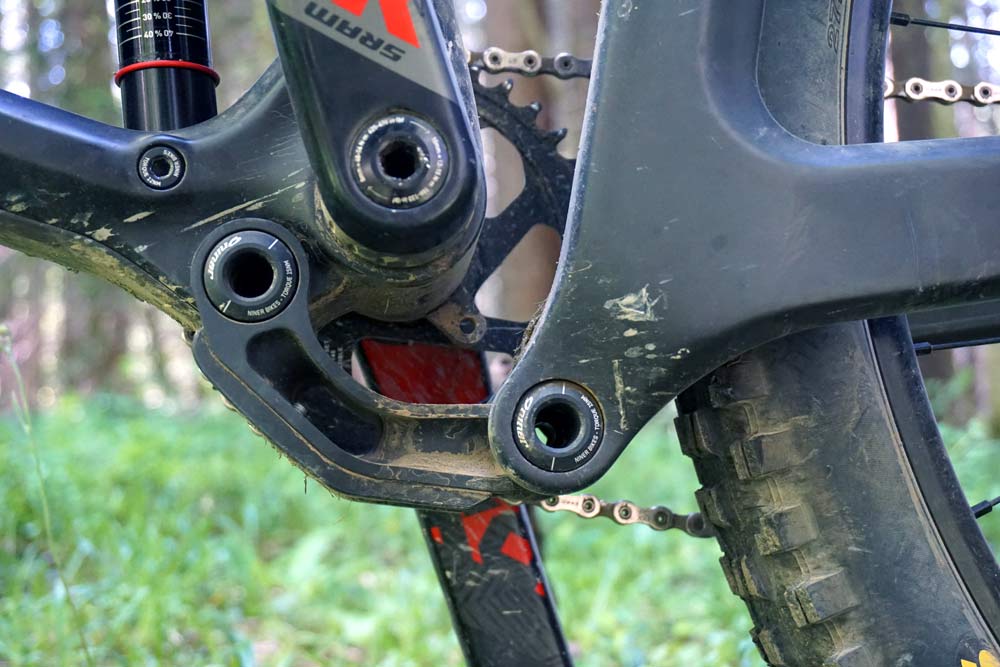
BIKERUMOR: Is there a downside?
KRUEGER: Maybe – since anti-squat partially deals with chain torque as one of the forces involved in the overall situation, one of the ways to get to an ideal place is to have the chain pull the swingarm towards an extended position. The opposite of this movement though is when the swingarm compresses rapidly, it would be pulling on the chain. Some people call this “pedal kickback”, and it’s generally not a desired trait. So, you have to be careful about allowing too much extension of the chain through the swingarm travel so that the person riding the bike does not feel that potentially negative behaviour.
PARRY: There is no set equation for the right amount of anti-squat. All riders have different riding styles. So, some may prefer more anti squat where others prefer less. It’s up to the frame designer to find that sweet spot that will accommodate the greatest number of riders. Too much anti squat and the suspension will extend under pedal loads, too little anti squat and the frame will compress under pedaling loads.
CLOWARD: (Too much) can cause the suspension to stiffen up or even lock out while pedaling. Over rough, rocky terrain, a design with too much anti-squat turns your ground-hugging bike into a hardtail.
BIKERUMOR: How much Anti-Squat do you want?
KRUEGER: In an ideal world – 100% exactly at all times you are pedaling, at any given travel. But that’s not possible. Due to that, most bikes that are competently designed have more than 100% in the initial travel, settle down to around 100% at the sag point, and then fall off from there. Really well designed bikes can manipulate the curve, how fast the rate changes, and even have multiple rates at different points in the travel, based on the desired traits of the type of bike.
CLOWARD: If you modify a suspension design to have the perfect anti-squat value, it will affect the other characteristics of the suspension system. How much anti-squat you want really depends on the bike’s intended purpose. On a DH bike, for example, you are more worried about downhill performance, so things like leverage ratio, anti-rise, pedal kickback, axle path and shock curve will usually take precedence over anti-squat. On an XC race bike, on the other hand, where pedaling efficiency is usually more of a priority, the anti-squat value usually takes precedence over the other riding characteristics.
BIKERUMOR: How do you design Anti-Squat into a frame?
CLOWARD: This can get very technical quickly. In very general terms anti-squat is designed in a frame by controlling the Instant Center, or IC, of the rear axle. The IC is the point around which the rear axle pivots during suspension compression. The IC can change location at every point of suspension compression. The IC is controlled by changing the position of the pivots. The art of suspension design is balancing all of the above mentioned forces, and additionally geometry, frame shapes, bottle cages, drivetrain, shock placement and specs – together to make the best riding bike for the intended purpose and use.
PARRY: Anti-squat is a result of the relationship between the chain force vector and pivot location. So, the simple answer is by manipulating the pivot location. However, there are many variables to consider here including leverage ratio, axle path, rate of chain growth and anti-rise.
KRUEGER: To truly answer this, without leaving parts out, or create arguments by glossing over certain areas – there is a 555 page book out there that is required reading to truly understand and then explain the answer to this question. There are also patented methods to doing this, which someone would need to be aware of. The short answer is math, geometry, and using them both to line up artificial points in space that affect how the bike reacts when mass (the human) shifts backward under acceleration, and how certain forces can have an effect on the frame. One mistake a lot of bike companies make is trying to design a bike first for a visual or manufacturing reason, and then hoping to make the suspension work. When designing a suspension bike, the very first thing that needs to be done is a proper layout of the suspension kinematics to ride properly, then visual and manufacturing concerns come in after.
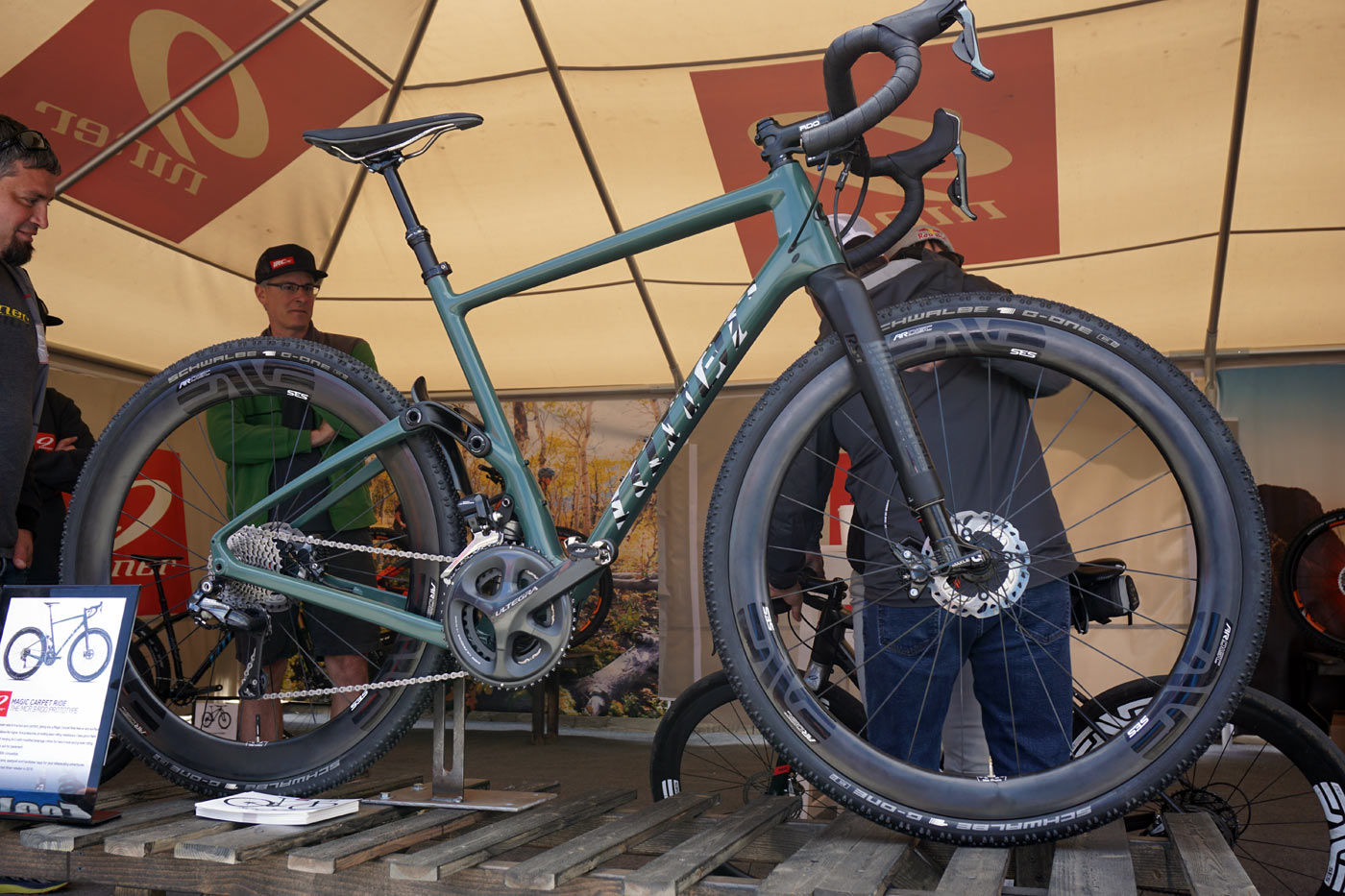
BIKERUMOR: So, what’s the takeaway?
Getting a bike with the right Anti-Squat is both easy and hard. It’s easy because most brands nowadays are designing their bike to keep up with the competition. A bike without good Anti-Squat simply couldn’t keep up and you’d know about it pretty quick (thanks, social media!). But it’s hard because brands don’t usually publish a number, relying instead on nondescript terms like “good” to describe their Anti-Squat performance.
And, as our experts mentioned, different types of bikes and riders will need different things. Different terrain benefits from different designs, too. For example, if you have technical climbs that often have you off the saddle, then you probably want a little less so the rear wheel can track the terrain even though your pedaling hard. But that means you’re likely to get more pedal bob when hammering on the flat sections. By designing the Anti-Squat characteristics into the kinematics as opposed to relying on firm low-speed shock damping, you can get a suspension that’s supple when floating over the little stuff yet still resists pedal bob.
As always, we recommend you ride as many different bikes as you can before you buy. Look for demo schedules on your favorite brands websites, head to events like Interbike’s Northstar Free-Ride Festival or Outerbike to sample the smorgasbord, and see what feels right for you.
Stay tuned, next week we explore Anti-Rise…
The fun never ends. Stay tuned for a new post each week that explores one small suspension tech, tuning or product topic. Check out past posts here. Got a question you want answered? Email us. Want your brand or product featured? We can do that too.
